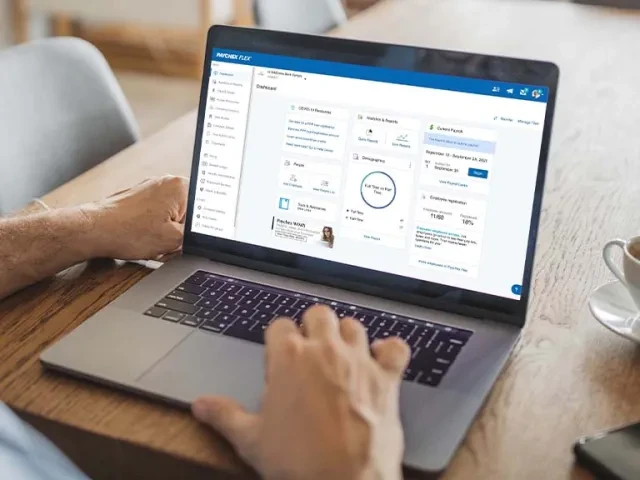If you're considering ways to incentivize and reward employees for your small business, a profit sharing plan (PSP) can be a great addition to your benefits program or on top of any existing retirement plans. In this article, we'll answer what a PSP is, explore its benefits and drawbacks, and discuss how to create a PSP for your business, regardless of payroll size.
What Is a Profit Sharing Plan (PSP)?
A PSP is an employer sponsored retirement plan that allows a business of any size to distribute a portion of the company's pre-tax profits to employees, which is generally tax-deductible in amounts up to 25% of the company's payroll. The plan creates a sense of ownership and alignment between employees and the company's financial performance.
Profit sharing plans can vary in structure, including cash plans, deferred plans, and stock plans. It can operate as a separate account, or a provision added to a 401(k) plan. A notable feature of a PSP is its flexibility, in that employers are not required to profit share from year to year, allowing them to shut off the plan during a business's leaner years or when other investments take priority.
How Does Profit Sharing Work?
Profit sharing works by setting aside a percentage of the company's annual profits, which is then allocated to eligible employees. This is in addition to their regular compensation. Generally, an employee receives a percentage or dollar amount of the business's profits, which are deposited into the employee’s individual profit sharing account.
Types of Profit Sharing Plans
It's entirely up to the employer to decide which type of profit sharing plan to use. Most typically fall within one of the following types of PSPs:
- Cash-based plans: Employers make direct cash payments to an employee's account as part of their profit sharing.
- Deferred plans: Like a defined contribution plan for retirement savings, employers contribute to an employee's retirement account, but employees only access it when they retire or leave the organization.
- Combination plans: This is typically a mix between cash plans and deferred plans. Employers can make cash contributions to an employee's retirement account and contributions to a deferred plan.
- Employee stock ownership plans (ESOPs): Employers give their employees shares of company stock instead of cash.
Allocation Methods
Employers can choose between the following allocation methods to share the benefits of PSPs with employees. They need to decide which method to use when establishing the plan:
- Same-dollar amount: Also called the flat-dollar amount, each employee receives the same contribution from the employer.
- Pro-rata: Also referred to as a comp-to-comp method, this method allocates profit shares as a percentage of the employee's compensation.
- New comparability: Also called a cross-testing plan, the employer defines classes of employees and contributes profit sharing contributions on a percentage basis to each class.
- Age-weighted: Since older employees are closer to retirement age, age-weighted plans are set up so that the longer someone stays with the business, the more their employer contribution rate increases.
Profit Sharing Examples
What is an example of how profit sharing works? As a basic same-dollar example, suppose a business generated a profit of $100,000 in a year and decided to allocate 5% to the profit sharing plan. If there are 10 eligible employees, each would receive $500 (5% of $100,000).
As a pro-rata profit sharing example: Suppose a company gives employees 10% of annual profits. Employee 1 earns $100,000, and employee 2 earns $200,000 annually (a total of $300,000 in compensation). The company's profits are $500,000. The profit sharing formula would play out as follows:
- Employee 1 = ($500,000 X 0.10) X ($100,000/$300,000) = $16,666
- Employee 2 = ($500,000 X 0.10) X ($200,000/$300,000) = $33,333
Profit Sharing Plan vs. 401(k)
While profit sharing and 401(k)s are both retirement benefits, they aren't the same. Profit sharing plans distribute a portion of the company's profits among employees at the employer's discretion. Employees don't contribute to a PSP. On the other hand, 401(k) plans allow employees to contribute a portion of their salary to a retirement account, allowing employers to contribute via employer match. A company can also implement a profit sharing plan even when other retirement plans are in place.
If you offer your employees a 401(k), you can add a profit sharing feature to the plan, allowing employers to contribute to 401(k) accounts based on the company's profits. This is more flexible than an employer match, a fixed contribution. The employer can contribute or not based on company profitability or business needs.
Benefits of Profit Sharing
Profit sharing plans offer many benefits for both employees and businesses.
- Flexibility: Contributions in a profit sharing plan are made at the discretion of the employer, who can choose when and how much to contribute. If an employer doesn't profit during the period, they don't have to contribute that year. You can also change how much you contribute year to year.
- Motivated Workforce: Profit sharing motivates employees to work harder and smarter, knowing their efforts directly impact their financial rewards. PSPs also have the potential to accumulate more than a typical 401(k) plan. For 2026, employees can receive up to $72,000 total or 100% compensation, whichever is less.
- Employee Loyalty: A company that shares some of its profits with employees has the potential to keep workers for the long term. Employees with incomes directly proportional to the organization's profit generally become more invested in its future success and stay with the company longer. They may feel they have an ownership stake in the company and more control over their financial futures.
- Employer Tax Advantages: Contributions to a 401(k) with profit sharing are pre-tax, tax-deductible, and not subject to withholding tax such as Social Security or Medicare.
Disadvantages of Profit Sharing
Profit sharing, while an attractive benefit, also has some potential downsides.
- Variable Costs: Profit sharing can become a significant expense during profitable years, which may strain your budget in leaner times.
- No Guarantee for Employees: Employers can reduce or not make PSP contributions from year to year, which could frustrate employees who come to expect this benefit (unless an employment contract with a labor union requires it).
- Potential Impact on Worker Performance: While a PSP can positively impact employee motivation, there's also potential for it to have a negative impact. Employees may not feel motivated to improve performance because profit sharing is distributed based on a pre-determined allocation method. Compare this with another incentive, such as an employee bonus, which can be entirely performance-based.
- Complex Administration: Setting up and managing profit sharing plans can be challenging due to reporting requirements, nondiscrimination testing, and other IRS and U.S. Department of Labor rules that businesses must adhere to.
How Are Profit Shares Calculated?
Profit sharing calculations depend on the allocation method that the employer chooses. As outlined earlier, the profit sharing formula for the same-dollar method is:
- Divide total profits by the total number of employees eligible for receiving the contribution
For the pro-rata method, follow these steps to calculate:
- Add the compensation of all the eligible employees to get the sum total; then
- Divide each employee's annual compensation by the sum of the total compensation; then
- Multiply each employee's fraction by the amount of the employer's contribution.
New comparability assigns different allocation percentages to certain groups — for example, job titles, geographic locations, employee types, or other criteria. To pass nondiscrimination testing, a first step often involves allocating a "minimum gateway" contribution to all non-highly compensated employees (NHCEs), usually between 3 and 5% of compensation. You would then make different contributions to each employee.
You can assign points to each participant based on age to calculate age-weighted allocation. The ratio of a participant's points to the total points of all participants determines the participant's percent of the overall profit sharing contribution.
How To Create a Small Business Profit Sharing Plan
If you're a small business owner looking to establish an employee profit sharing plan, you must take certain basic steps to set it up:
- Adopt a Written Plan Document: This is the foundation for day-to-day plan operations. If you hire someone to help with your plan, they will likely provide the document. If not, consider working with a retirement plan professional. In either case, you will be bound by the plan document's terms.
- Arrange a Trust for the Plan's Assets: A plan's assets must be held in trust to ensure they are used solely to benefit the participants and their beneficiaries. The trust must have at least one trustee to handle contributions, plan investments, and distributions. The financial integrity of the plan hinges on this step, so selecting a trustee is one of the most important decisions you will make in establishing a profit sharing plan.
- Develop a Recordkeeping System: Establish a system to track and properly attribute contributions, earnings, losses, plan investments, expenses, and benefit distributions. Having a system in place will also help tremendously with necessary government reporting.
- Provide Plan Information to Eligible Employees: You must notify employees eligible to participate in the plan about certain benefits, rights, and features. In addition, you must provide a Summary Plan Description (SPD) to all participants, which discloses plan information to participants and beneficiaries.
- Administer the Plan: Ensure proper administration and compliance with IRS regulations, including Form 5500 filing. You may also choose a retirement services provider to help with administrative responsibilities. Remember that you may still have certain fiduciary responsibilities even if you go this route.
Choose the Benefits Your Employees Need
Profit sharing is a valuable tool for large, mid-sized, and small businesses to motivate and retain employees while aligning their interests with the company's financial success. By carefully designing and implementing a profit sharing plan as part of your employee benefits package, you can create a more engaged and motivated workforce while reaping the tax advantages and other benefits that profit sharing offers.










